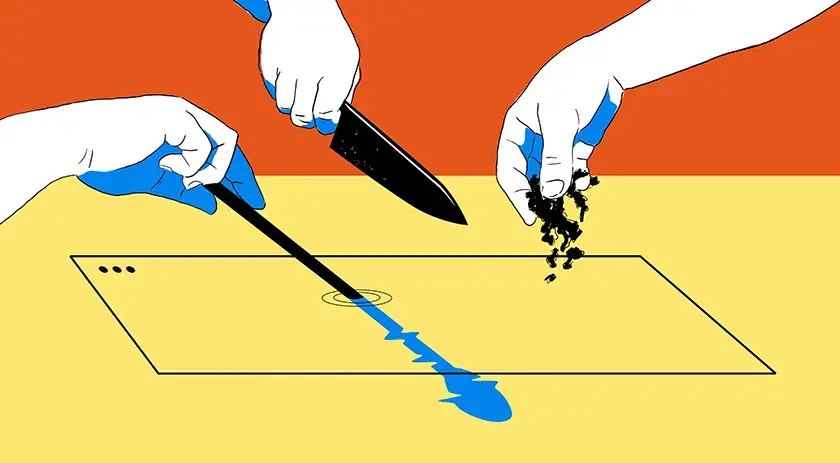I forget that many people dread conferences. So I was surprised to hear “oh that’s too bad” when I mentioned to a cafe stranger that I was in LA for one. Lucky for me, it was a digital design conference, Awwwards conf. Filled with intricate stonework illuminated by red and violet light, the Ace Hotel theater alone was inspiring. Throughout the two-day set of talks ranging from inspirational to technical, a common theme was hard to miss. Regardless of where technology takes us, storytelling will always be at the heart of digital design. In a world where the average attention span is shrinking, storytelling still captivates and sticks with an audience.
Storytelling as a process
I describe the work that I do as creating digital tools. While this holds true, I was beginning to forget my role as a storyteller as well. The projects that I work on can easily last months, some in complex domains that I’m not familiar with at the start of the project. To move forward, all contributors need to be coordinated. To align stakeholders, developers, marketers, and designers over an extended period of time, I use stories as a roadmap.
When I started my career a few years ago, I took an internship at a production company, which exposed me to the coordination of everyone involved on a film set. The director, actors, and crew all need to tell the same story with each element they contribute to. So before filming even begins, the literal and emotional narrative being told needs to be defined and clear.
In digital design, we need to make sure the story being told isn’t an afterthought. Unlike a production company, a product might not explicitly tell a story, at least not in the traditional sense. Our work is often defined in terms of product features and user interactions. But that doesn’t diminish the unifying potential of a storytelling approach. We’d be missing out if we didn’t pay attention to the stories we tell.
Before putting any pixels on the screen, a project starts with discovery. Discovery reveals any existing needs and sets the foundation for a designer’s exploration. Using research from discovery, stories help us capture and sell an idea. It’s important to frame our approach and clarify concepts to get everyone on the same page. We do user interviews to uncover meaning, how something fits into or enhances a life.
Even if a client comes in with a well-defined list of features they see a need for, it is important to validate them. Storytelling can contextualize the experience of using any feature, and help confirm whether it is necessary for the user. Presenting a compelling story will help the rest of the team, as well as the client, to get on board with removing or keeping specific features. A designer simply saying “I’m not designing that feature” without further explanation holds far less merit.
Storytelling as a product
In product design, storytelling is less about selling something, and more about emotional experiences. While pretty much every product has a clean and friendly marketing site selling a product’s meaning, the kind of storytelling that is often overlooked is the emotional experience of using any product.
Layout, type, color, hierarchy, language all contribute to the feeling a person gets when they use your product. This experience needs to be clearly defined early on in your workflow. Cindy Chastain defines this as an “experience theme”. Every product leaves the user with an emotional experience. Even something as simple as a word processor emits a certain feel. The layout of Google Docs says “I’m here to do business, and you can trust me” while something like Dropbox’s Paper is all “be free and fly where the wind takes you”.


Before designing the features, structure, and style of these two products, this emotion had to be defined upfront. For me, an experience theme is also useful for contextualizing my design decisions to a client.
To wrap up
Different forms of storytelling influence the products that I design. Storytelling is both a useful process tool, and an important consideration for users. A lot of voices contribute to the creation or enhancement of a product, and it takes some work to get those voices to start telling the same story.
DockYard is a digital product agency offering exceptional user experience, design, full stack engineering, web app development, custom software, Ember, Elixir, and Phoenix services, consulting, and training.


